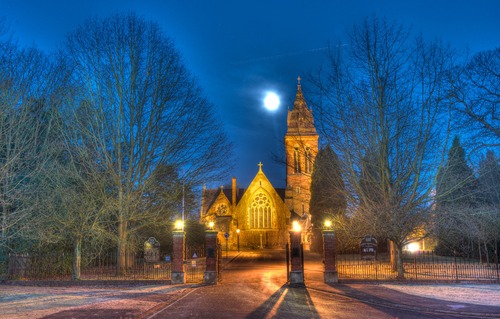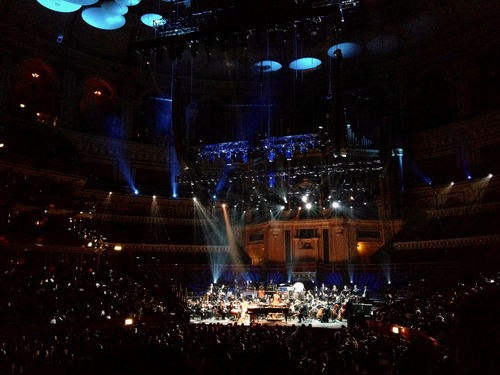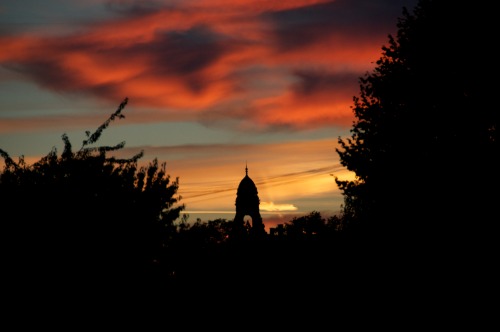Royal Garrison Church Of All Saints
 Wednesday, November 28, 2012 at 8:33PM
Wednesday, November 28, 2012 at 8:33PM I've driven past the Royal Garrison Church Of All Saints in Aldershot on numerous occasions but I never really paid much attention to it until yesterday morning. As I drove along the A325 in the pitch dark and cloudless sky I noticed the full moon over the floodlight church. I can't explain why I never noticed how picturesque the church was until that moment. I'd driven past in the dark before, the church has been floodlit before, and the moon has been visible on many occasions but the church stood out of the first in months, and I cursed myself for not having my camera with me.
So this morning I threw a tripod in the boot of the car and put a charged battery and empty memory card in my camera and headed to work. The sky was not clear this morning, not cloudy just overcast, and the moon was no where to be seen so I feared my moment had passed, but as I approached the Wellington roundabout I saw the moon over the church, just where I wanted it, and so while most people were still in bed I was stood in the open air with the tempertaure hovering at -3°C taking photos at 6:45 in morning.
 Royal Garrison Church Of All Saints, Aldershot (click for a larger version)
Royal Garrison Church Of All Saints, Aldershot (click for a larger version)
The above image is a tone mapped image made up from five separate shots. Even though the church in the background was brightly lit and the trees in the foreground were dark, the tone mapped shot gives the impression that the whole scene was evenly lit. Despite being taken just before 7am on a dark November morning it's the apparent even exposure over the whole scene that gives the image it's slightly unreal quality.
By sheer coincidence, as I was taking the five photos that make up this one image, a private jet that had just taken off from nearby Farnborough Airport passed through the scene. It took approximately 45 seconds to take all five photos and you can see the trail the jet's lights left as it moved from right to left. The long streaks of light are the wing tip lights which were on constantly and the red spots between the streaks are a result of the flashing beacon on the underside of the aircraft. You can also work out which photos were the longer exposure (and therefore have the longest streak) and when the camera's shutter was closed (the gaps between streaks).
Most days have a hightlight of some nature but it's rare that the highlight of my day is before 7 in the moring, but today I could happily gone back to bed knowing I'd done something that pleased me greatly.





